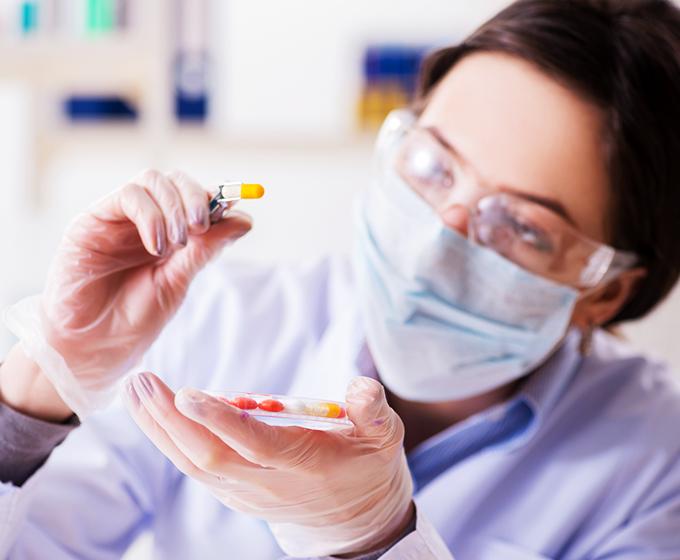
Credit: UTSA
Organosulfur compounds are widely present in our bodies and the natural environment. They are found in onions, shallots and even cauliflower. Medical research finds that when consumed, they can protect against cancer, heart disease and even diabetes. There is also evidence of these compounds’ antiviral and antibacterial uses. About a quarter of all pharmaceutical drugs currently use OSCs.
However, the use of sulfur atoms in the manufacturing of drugs is a double-edged sword. Sulfur is tricky to introduce into a molecule because currently available chemical tools do not allow researchers to introduce sulfur into molecules with high levels of precision. This shortcoming impacts scientists’ ability to make molecules that can one day become medicines, as well as the eventual efficacy of future drugs that rely on a particular geometry of synthetic sulfur molecules. UTSA has launched research that aims to solve this roadblock to expedite new drug development.
“Our end goal is to build a broad range of synthetic sulfur-containing molecules that will become readily accessible for organic synthesis and drug discovery applications,” says Associate Professor Oleg Larionov, principal investigator of this project at the UTSA Department of Chemistry. “We want to contribute to the improvement of human healthcare through more efficient syntheses of small molecule biological probes and therapeutic agents.”
Sulfur is the most common atom in small molecule medicines after oxygen and nitrogen, and a quarter of the most prescribed small molecule drugs are organosulfur compounds. At the functional group level, more than 37% of all FDA-approved organosulfur drugs contain the sulfonyl group, emphasizing the importance of this particular group in drug design.
There are challenges to the current synthetic methods that are used to make organosulfur compounds, For example, chemists often struggle to synthesize organosulfur compounds with a specific structural geometry. Usually, existing syntheses result in mixtures of products of different chemo-, regio- and stereo- isomers. Compounds with different chemo-, regio- and stereo- structures are made by the same types and numbers of atoms, but assembled in different ways.
Professor Larionov intends to develop methods to improve the outcome of synthesizing these sulfur-containing products with specific chemo-, regio- and stereoselectivity. The UTSA group will use more than $1 million in funding from the National Institutes of Health to improve the development of these therapeutic agents.
UTSA researchers plan to use intermediate oxidation states of organosulfur reagents, in particular sulfinates, to solve the industry’s limitations of current methods including the lack of efficient methods to synthesize sulfinates directly from abundant precursors.
“We want to streamline synthetic approaches and solve long-standing problems in medicinal chemistry,” says Larionov. “Our work and discoveries are the foundation for future medicinal chemistry research.”
Larionov’s research group focuses on complex molecule synthesis with a special focus on compounds targeting cancer. It’s expected that this research will yield results in four years. Figuring out how to improve the use of sulfur in drug development also has implications beyond medicine. Improving the use of OSCs can advance functional materials such as photovoltaics, organic electronics, carbon materials, nanotechnology, liquid crystals, magnetic materials, surfaces and interfaces, and biomaterials.
###
UTSA has been recognized by Nature Index as one of the leading universities globally for its output of research in the natural sciences, including being named one of the Top 25 Rising Young Universities. Among the Top 50 Young Universities in Chemistry, UTSA’s program is ranked first in the United States and 18th in the world.
Media Contact
Kara Soria
[email protected]
210-458-7495
Original Source
https:/




